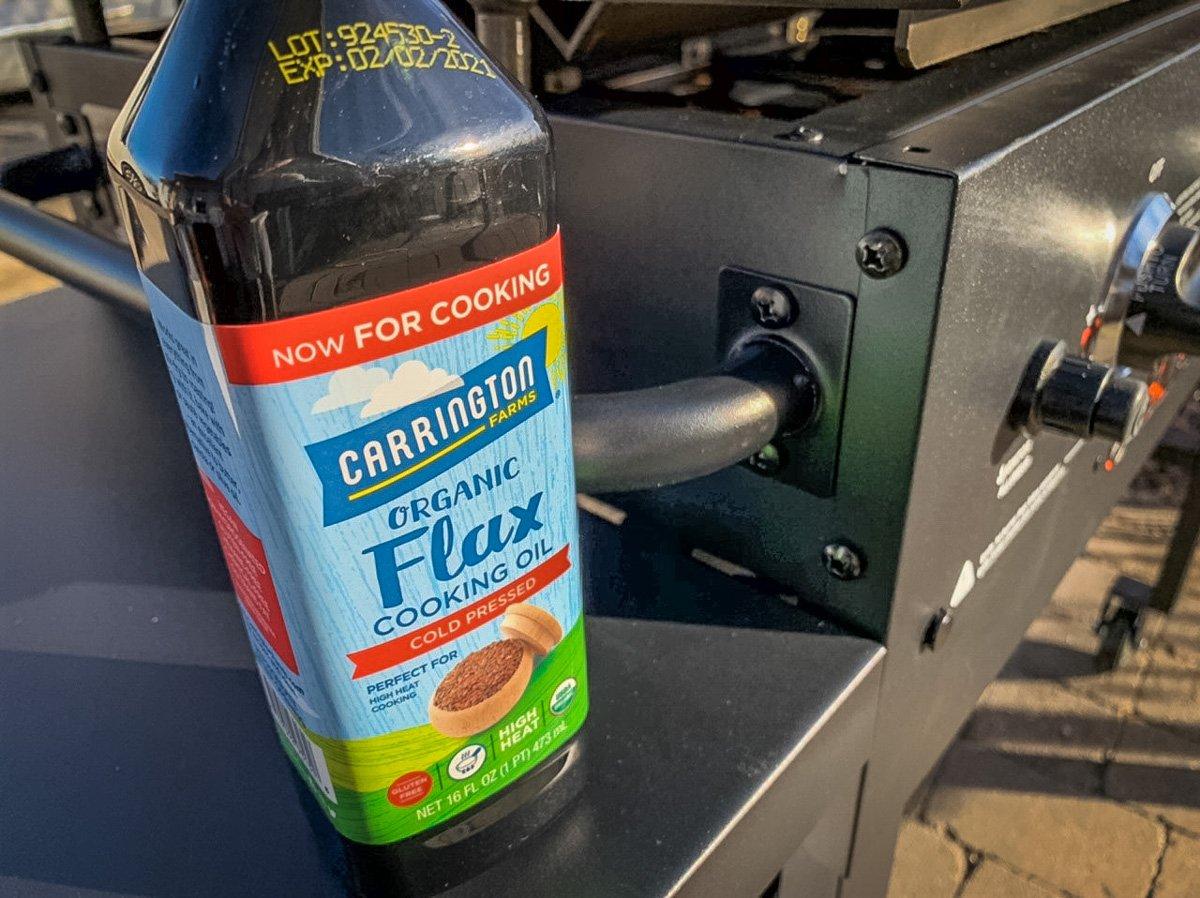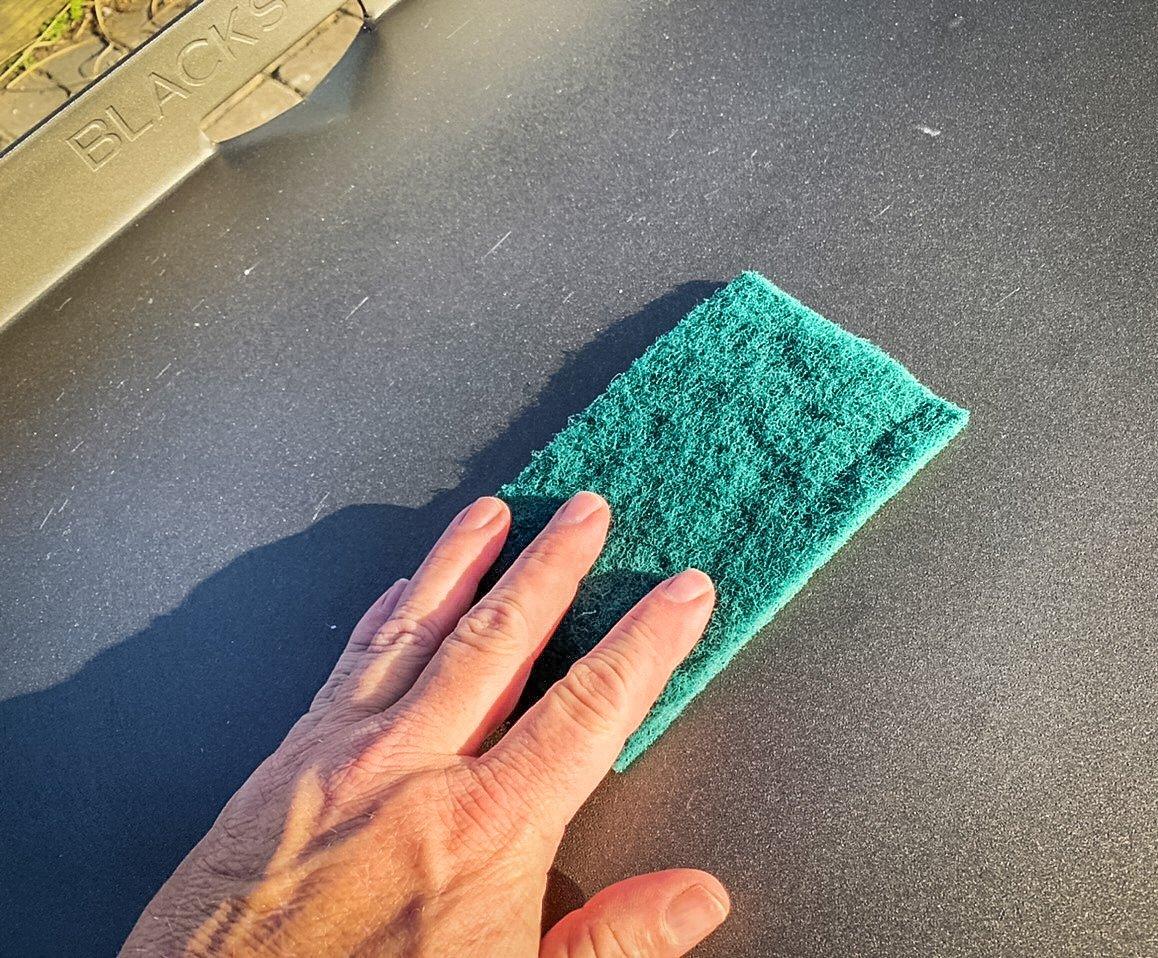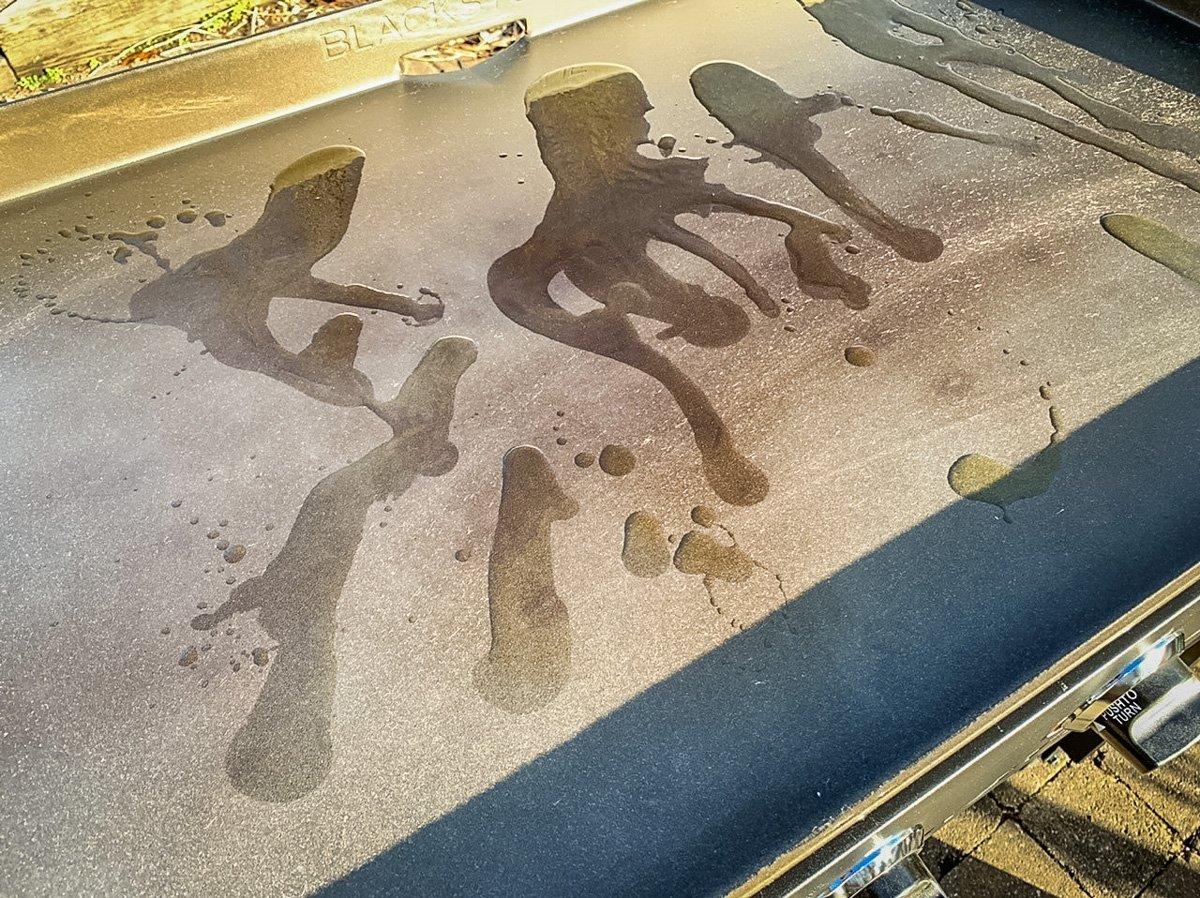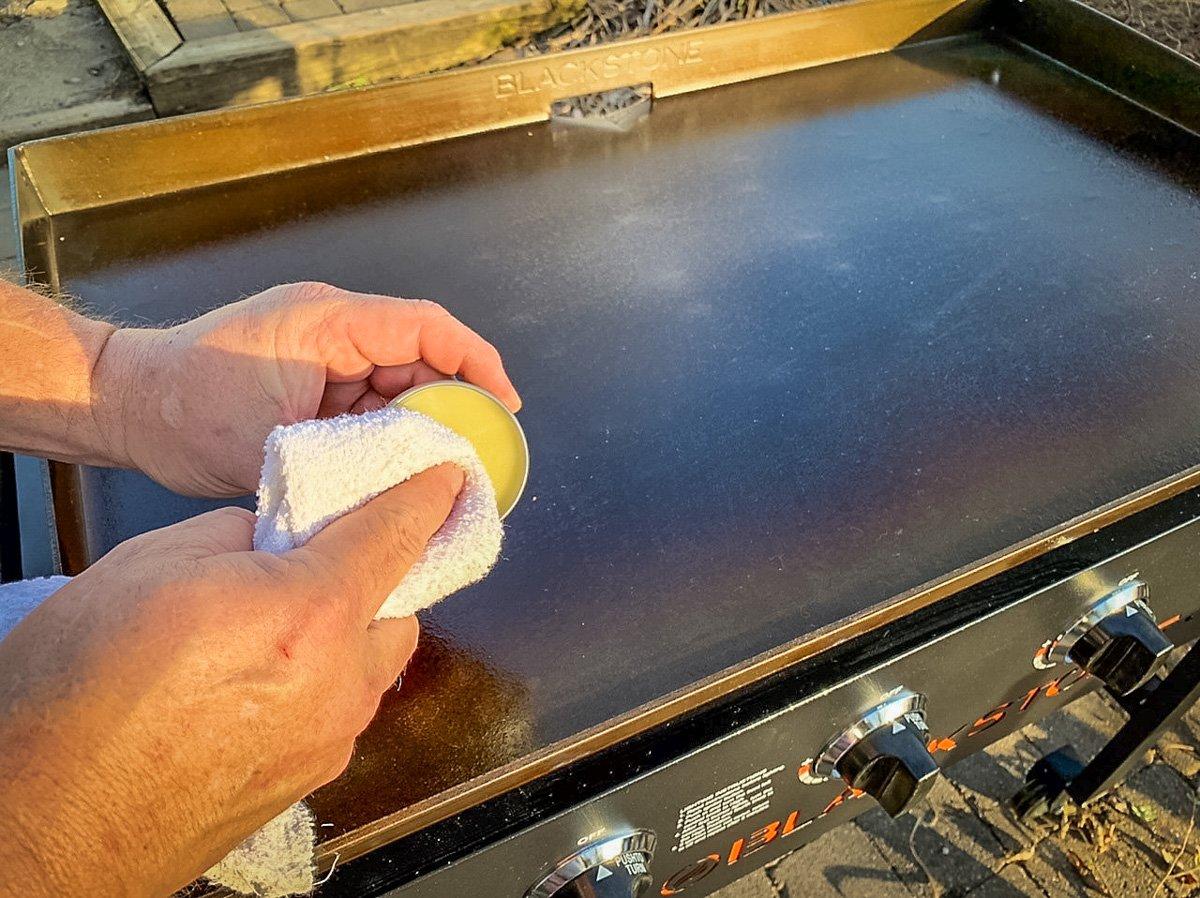With a little advanced prep, your griddle will have a non-stick surface for many meals to come
Propane griddles are the hottest thing in cooking right now and here at Timber2Table, we love our Blackstone. From burgers to breakfast, a good griddle will sear, steam or make a mean hibachi-style meal.
These griddles come with a cold-rolled steel cooktop. Just like an unseasoned cast-iron skillet, this steel surface needs to be seasoned well to make it rust-proof and non-stick. Do it right the first time, and each additional cook will only improve the slick cooking surface. Don't do it, or do it wrong, and you will be looking at a rusty surface that sticks to food like a cocklebur to a bird dog.
The seasoning process consists of coating the surface with an oil. We use flax, but grapeseed, canola or peanut oil will also work well. The oil is then heated to the smoke point, burning it off and cooking it into the steel surface. We use multiple layers of flax seed oil, then finish with a final coating of a cast-iron conditioner like BuzzyWaxx, a blend of oils and beeswax that gives the surface a nearly Teflon-slick coating. Other cast-iron conditioner brands that work well include Crispbee and Lovett Sundries.
This is how we season our griddle tops here at Timber2Table.
Step 1: Remove Rust
Occasionally during shipping, a bit of moisture may land on the cooking surface or another piece of metal may rub against the surface, causing a bit of a rough patch. Use a Scotch bright pad to scrub away any surface rust or rough spots.
Step 2: Clean It
Griddle tops usually come from the factory with a thin soy oil coating. Use a mild dish soap in a bit of warm water to scrub away any factory coating. Wipe everything down with a clean, damp cloth afterward.
Step 3: Heat It
Turn all the burners to high. Let the steel heat until patches start to noticeably change color. Sprinkle on some oil. Using tongs or heat-resistant gloves, use a clean, lint-free cloth to wipe the oil evenly over the entire surface, making sure to get the corners, sides and outside of the griddle surface as well.
Step 4: Wait and Repeat
The oil will soon start to smoke. Watch it until the smoke stops. Wipe on another coating of oil and repeat the process.
Step 5: Coat and Protect
After you have put on at least three to four layers of oil, turn the burners off and allow the surface to cool until it is still warm, but safe enough to touch. Use a clean cloth and wipe a coating of BuzzyWaxx evenly over the cooking surface. Turn the burners back on to medium-high and heat the surface for an additional 30 minutes.
Step 6: Cook Something Greasy
I like something with a bit of fat for the first cook. Bacon is perfect, as are burgers. With each cook, the surface seasoning will get darker in color and even more non-stick.
Step 7: Maintain
Always clean your griddle surface well after cooking. While the steel is still hot, squeeze on some water and scrape any stuck-on bits off the surface with a metal spatula. Lightly oil the surface, then cover to protect it from the elements until your next cook.













